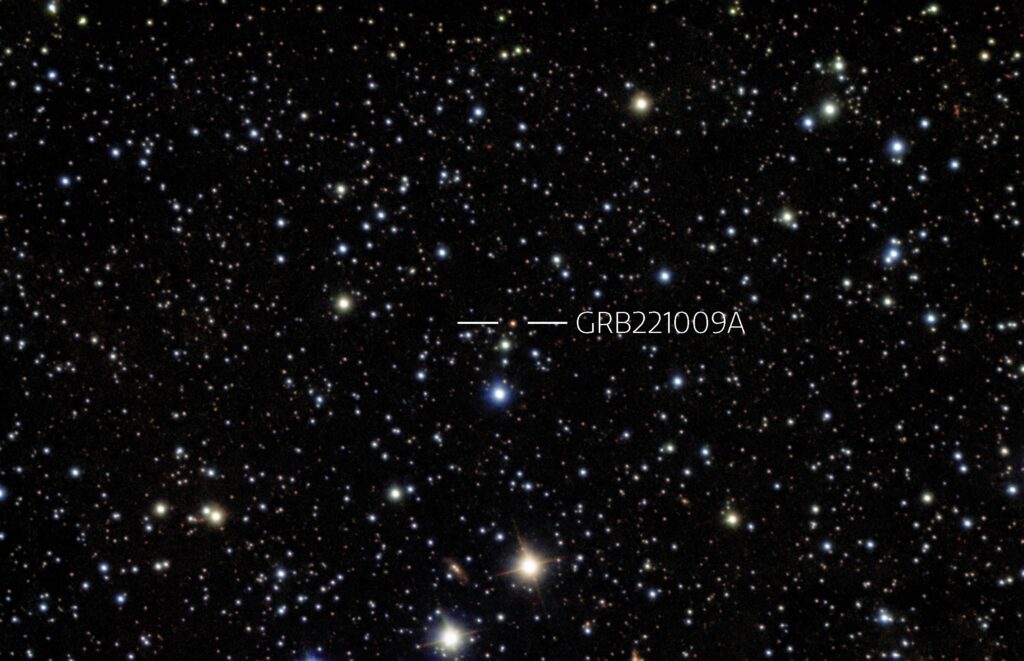“This GRB is an extraordinarily rare event,” said Rastinejad, a Northwestern Ph.D. student. “It was so bright that it triggered the Swift gamma-ray telescopes twice and fully saturated the detectors — something I haven’t seen in my time observing GRBs.”
“As long as we have been able to detect GRBs, there is no question that this GRB is the brightest that we have ever witnessed by a factor of 10 or more,” said Northwestern astrophysicist Wen-fai Fong, who advises Rastinejad. “Because the GRB is so bright, we expect to be able to monitor it for several months. It’s currently in its infancy, and we are learning more with each new passing observation. Unfortunately, we only have about a month or so before it goes behind the sun. But when it comes out of solar conjunction early next year, we will be excited to see the GRB as a messy ‘toddler.’ Then, we will be ready and waiting to capture it on camera.”
Read the full Northwestern News stories:

Credit: International Gemini Observatory/NOIRLab/NSF/AURA/B. O'Connor (UMD/GWU) & J. Rastinejad & W. Fong (Northwestern University)

